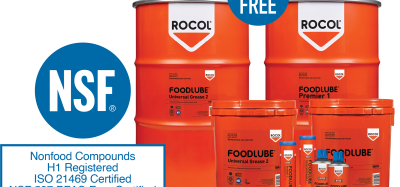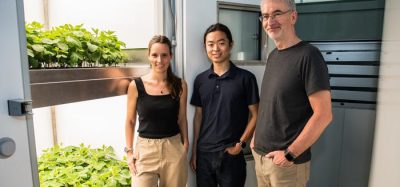The benefits of automated pathogen testing
- Like
- Digg
- Del
- Tumblr
- VKontakte
- Buffer
- Love This
- Odnoklassniki
- Meneame
- Blogger
- Amazon
- Yahoo Mail
- Gmail
- AOL
- Newsvine
- HackerNews
- Evernote
- MySpace
- Mail.ru
- Viadeo
- Line
- Comments
- Yummly
- SMS
- Viber
- Telegram
- Subscribe
- Skype
- Facebook Messenger
- Kakao
- LiveJournal
- Yammer
- Edgar
- Fintel
- Mix
- Instapaper
- Copy Link
Posted: 3 May 2005 | Eric Maucci, Food Hygiene Technical Manager, Laboratoire Inter-Départemental des Analyses Laitières (LIDAL) | No comments yet
Renowned for its ‘postcard’ lake-side setting surrounded by snow-capped mountains, the beautiful French town of Annecy is perhaps less well known as the home of famous regional raw cows’ milk cheeses, such as Reblochon and Tomme. Controlling the quality of these cheeses and the raw milk used to produce them, is the daily task of the Annecy-based reference laboratory, LIDAL.
Renowned for its ‘postcard’ lake-side setting surrounded by snow-capped mountains, the beautiful French town of Annecy is perhaps less well known as the home of famous regional raw cows’ milk cheeses, such as Reblochon and Tomme. Controlling the quality of these cheeses and the raw milk used to produce them, is the daily task of the Annecy-based reference laboratory, LIDAL.
Renowned for its ‘postcard’ lake-side setting surrounded by snow-capped mountains, the beautiful French town of Annecy is perhaps less well known as the home of famous regional raw cows’ milk cheeses, such as Reblochon and Tomme. Controlling the quality of these cheeses and the raw milk used to produce them, is the daily task of the Annecy-based reference laboratory, LIDAL.
Created in 1964 by the Savoy agricultural organisations to promote the locally-produced milk and milk-derived products, the laboratory has since undergone significant changes. Firstly, it was appointed as an Inter-professional Laboratory for Milk Analyses in 1975 and then incorporated the activities of the Upper Savoy Veterinary Laboratory in 1991. In the same year, the laboratory began serology and pathogen testing and the number of tests performed by the laboratory has since risen rapidly, resulting in the number of staff growing from around 15 to more than 40.
Dairy products (raw milk, cheese) account for the large majority (more than 85 per cent) of pathogen detection tests, however, foodstuffs such as cooked meats, sausages and ready prepared meals are also analysed. Since 2003, the laboratory’s activities have developed to include bottled and tap water analyses.
The laboratory routinely tests for four pathogens: Listeria, Salmonella, Staphylococcus aureus and Escherichia coli. In 2004 more than 18,000 Listeria tests; 5,000 Salmonella tests; 6,000 Staphylococcus aureus enumerations and 4,000 E. coli tests were performed on dairy products and other foodstuffs.
Customer loyalty and lab management drive change
Until recently, the laboratory used traditional reference methods (plate inoculation, incubation, visual reading) for pathogen detection, with the exception of an alternative rapid test method for Listeria.
The issue faced by the laboratory was that obtaining Salmonella detection results using the manual method took 96 hours, whereas Listeria could be provided within 48 hours. This situation blocked products for an extra two days, negatively impacting the management of finished product stocks for the producers.
As a result the laboratory management team decided to investigate how to better serve their primary customers. Providing both Salmonella and other pathogen results within 48 hours was considered to be a very significant move toward improvement. Increasing the laboratory productivity was also a key requirement in order to manage the rising number of samples being sent for testing by its customers.
To respond to customer needs, the laboratory searched for an automated multi-parametric solution that would enable it to run a large range of test types on a single system. This would allow testing to be streamlined and mean that the laboratory technicians could become competent in running all test types on the system very quickly. The solution also needed to be robust to cope with the high-test volumes and also easy-to-use, to guarantee result performance in the event of staff rotation or holiday periods.
It was also most essential that the automated solution of choice would maintain the full confidence of customers in the high level of service provided by LIDAL. As an accredited laboratory, there was no room for compromise on performance. The solution had to be well recognised from a technical standpoint and be validated by the leading official regulatory bodies.
“At the time, we considered several different technologies – PCR, probes and immunoanalysis”, says Laurence Delery, LIDAL’s Food Hygiene Department Supervisor.
Choosing a proven system “We eventually focused on the VIDAS®, the automated immunoanalysis solution from bioMérieux, which seemed to best meet our demanding expectations”, continues Laurence Delery. Not only could this system provide a shorter time-to-result, as expected, but the VIDAS technology was also installed in several customers’ laboratories, which would facilitate acceptance of the technology change. It was furthermore reputed to be an extremely robust system with proven performance.
As an accredited laboratory and in order to fully qualify their choice, it was then considered necessary for the LIDAL technical team to test the automated method to assess its integration in the organisation of the laboratory and better understand the analytical workflow. A demonstration was organised and during a two-week period the laboratory ran tests on its most representative food matrixes for the two major parameters; Listeria and Salmonella. The trial proved highly satisfactory and enabled Laurence Delery to observe the superior sensitivity of results compared with the traditional reference methods.
The technical support received during this trial period also played an essential role in the laboratory’s decision. Furthermore, the French standardisation authority, AFNOR, had already validated three key parameters on the same VIDAS platform: Listeria, Salmonella and E. coli O157.
However, for a laboratory, making such an important decision also involves establishing a relationship of confidence with the supplier in order not only to select the most relevant technical solution for today, but to choose a partner with an evolving product portfolio for longer-term benefits. A visit to the manufacturer’s site enabled an assessment of the R&D capabilities to bring innovative solutions to the chosen platform that respond to food industry expectations. During the visit, a review of the production facilities and the whole Quality Assurance chain, from development to technical support, was also critical in the decision-making process and helped reinforce the good relationship between laboratory and supplier.
Integrating the automated solution
Due to the increasing business volume that had been ongoing for several years, the laboratory needed to convert its premises to make them more spacious and functional. The conversion duly completed, the new system, which included an analytical module enabling up to 60 tests to be run simultaneously, were installed on January 6th 2004 in the brand-new LIDAL Food Hygiene Department, covering around 300m2.
The system provider team that supported the equipment demonstration period then trained the laboratory’s entire technical staff on the system for two days. Changing the organisation of the laboratory in the middle of a peak of activity presented a double challenge to the laboratory. However, the impact of the change was minimised by the simplicity of the new technology and the motivation of LIDAL’s technical staff to fully benefit from the advantages of the new organisation and the added security provided by the automated platform.
As a result, all the laboratory technicians accepted the change as positive and were fully operational within just a few weeks. The straightforward VIDAS protocols and user-friendly Windows-based software enabled the laboratory to rapidly and completely integrate the new automated work process.
Savings along the line
Several months after installation, the LIDAL laboratory carried out a technical and financial assessment, which revealed significant savings at all levels.
Rapid results play a key role in time savings, with Listeria and Salmonella results obtained within 48 hours. This short turn-around time enables customers to better manage their stocks and, in particular, to release batches produced on Thursdays before the weekend.
The laboratory chose to connect the system to the central laboratory information management system (LIMS). This connection means there is no longer any need for re-transcription of data, as was the case with manual tests, thereby eliminating the risk of operator error and increasing result security. It also secures objective result interpretation and full traceability.
In addition, significant time savings in the workload have been identified, bringing the productivity improvement expected. These time savings, achieved through the LIMS connection, improved workflow and rapid results have enabled the laboratory to employ only one technician on pathogen testing, instead of two previously, thus freeing up the valuable time of a technician for other added-value tasks created by LIDAL’s growing activity.
Customer benefits
The laboratory has also observed that the benefits of an automated pathogen testing solution can be passed down to its customers. The producer’s principal concern is to release products as early as possible to avoid extra storage costs and loss of sales. By providing results within 48 hours, the automated testing system makes it possible for the laboratory to authorise the release of significantly more products within two days, provided all tests are negative. On the other hand, if a positive result is suspected, the producer can also be alerted at an early stage and make the necessary management decisions, either at stock level for raw materials and finished products, or in process to clean the production lines.
For LIDAL’s customers, the choice of AFNOR/AOAC validated VIDAS tests is a guarantee of security, high performance and quality assurance. In May 2004, just four months after the equipment was installed, the laboratory was audited by COFRAC (French Accreditation Committee) and received accreditation for the VIDAS Listeria and Salmonella protocols.
Dedicated service strengthens long term confidence
The regional product specialist of the technology supplier visits regularly to respond to the continually demanding needs of the laboratory and a dedicated application specialist is always available to answer any technical questions. “Having the same contact on a regular basis saves time on explanations and increases our confidence in the supplier”, says Laurence Delery.
Furthermore, the laboratory’s requirement of a system that would continue to evolve through R&D development is met by the regular introduction of new innovations to the testing system. A presentation recently made to the laboratory concerned an optimised protocol for the Salmonella test, demonstrating improved time-to-result and cost-savings, made possible through the elimination of an enrichment stage. These innovations help the laboratory to keep apace with new technological developments and fully satisfy their customers’ evolving requirements.
One year later
Looking back one year after having first installed its automated pathogen detection solution, the overall assessment of the impact on LIDAL’s activity is extremely positive. The technicians are happy using the new system, which makes for a good working atmosphere and the automated solution has significantly reduced the workload, leaving one technician free for other tasks. It is also easier to staff the pathogen laboratory during holiday periods or sick leave, since the replacement is easily able to operate the system, with no compromise on the laboratory’s high level of performance.









